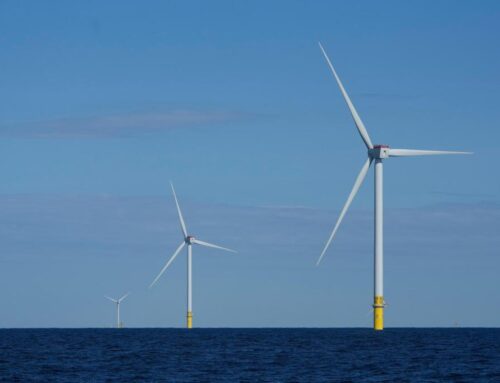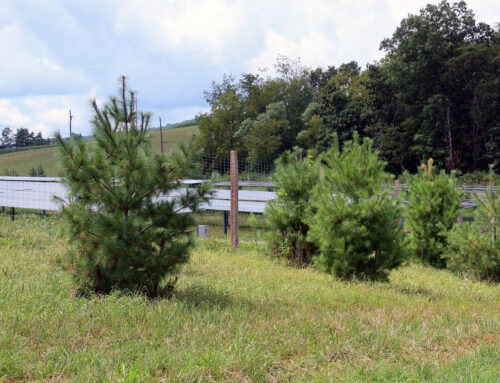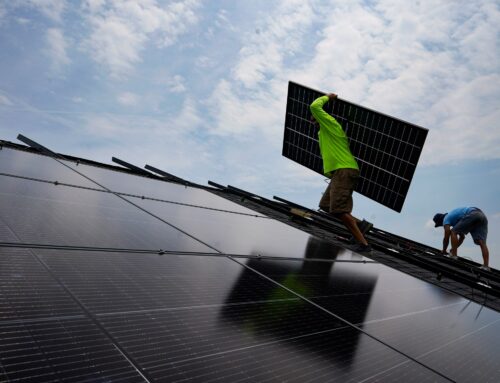Amazon Boosts Its Water Replenishment Work With Four New Projects
November 17, 2025
The global technology company Amazon has announced four new water replenishment projects in the U.K. and across North America, which are expected to restore over 2 billion liters of water annually.
The four projects all involve nature-based solutions to harness forests, wetlands, and healthy soils to collect, purify, store, and distribute freshwater.
They include a scheme in North Carolina, where Amazon has teamed up with the National Fish and Wildlife Foundation to restore and improve management across 20,000 acres of longleaf pine forests in the Pee Dee River basin.
In Guadalajara, Mexico, Amazon is also supporting a watershed restoration project in collaboration with the environmental services company, Toroto.
In New Mexico, Amazon is supporting the National Audubon Society’s water leasing programme to help with critical flows for the Rio Grande River and two urban wetlands.
And in the U.K, Amazon is working with the Rivers Trust on a new floodplain restoration project on the River Pang in the Thames River Basin.
Amazon’s water stewardship lead, Will Hewes, said it is investing in whatever the water-related need is in each of the four communities, in an interview.
Hewes added the projects also involve nature-based solutions to improve water quality, reduce flood risk and improve long-term water sustainability.
“We are helping communities invest in recycled water, which not only help us, but it also can be really helpful to building a resilient water supply for the local community” he told me.
“We are also putting water back into the community and invest in whatever the water-related need is in a community.”
He said the water replenishment work Amazon is involved with can involve deploying technology to reduce water leakage, and it can also involve supporting nature-based solution.
Hewes added Amazon now supports 40 water projects around the world, which are expected to return more than 17 billion liters of water to communities every year once every project is completed.
He added the North Carolina project with the National Fish and Wildlife Foundation will run across 20,000 acres of land and is expected to replenish around 1.6 billion liters of water each year.
“We engage with the local water utility, local policy makers on the ground, and our own people who may live in the community and interact with them,” he added.
“And globally, 70% of water is used in agriculture, so if you want to find water savings, go where the water is being used. Now, in the areas near where we’re operating in the U.K, we have focused more on water quality issues.
“There is real value in demonstrating some of those technology projects, because we are really showing not only how corporates can help support water sustainability, but also how technology can help farmers be more efficient in irrigation.
“But in some cases, nature-based solutions are the right thing to do, so we will continue to support those as well.”
He told me Amazon started its water stewardship work in 2019, and its data center operations have improved its water efficiency by 40% since 2021.
“We only use 0.15. liters per kilowatt hour, which is very much at the front end of the industry,” said Hewes.
“And we are going from 24 data centers using treated sewage to 120 in the next few years.”
The River’s Trust’s deputy director of strategic development and stewardship, Alex Adam, said it has a strong focus on nature-based solutions, in an interview.
Adam added by deploying the right nature-based solutions in the right places, and at the right scale, the trust can start to build the resilience needed to mitigate the impacts of climate change around England.
The chief executive of Action for the River Kennet, Charlotte Hitchmough, which works alongside the Rivers Trust on the floodplain project in the Thames River Basin supported by Amazon, said its backing has been “massively helpful”.
Hitchmough said the project aims to restore a section of the River Pang in West Berkshire and allow it to naturally spill out into the flood plain.
“We are trying over the next 10 years to restore the Pang to the route it would have followed before people over time have moved, straightened, impounded and embanked it,” she told me.
“Wherever possible we will return the river to the lowest point in the valley, put the wiggles back and allow the flood plain to be wet again so the river can operate as a functional ecosystem, which is very exciting.”
The technology giant Microsoft also has a sizeable water replenishment portfolio. In April, it announced a new partnership, which aims to collect rainwater from a new development in Madrid, Spain.
Other Microsoft water replenishment work includes a project in London with FIDO Tech, which involved AI-led leak detection, and was subsequently extended to include projects in Phoenix, Arizona, Queretaro, Mexico, and Las Vegas, Nevada.
Search
RECENT PRESS RELEASES
Related Post




